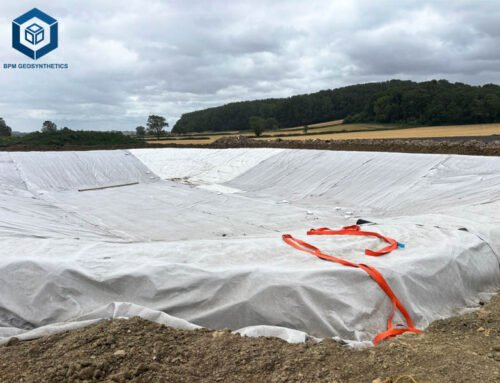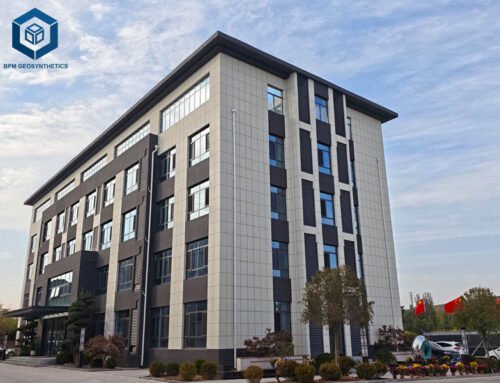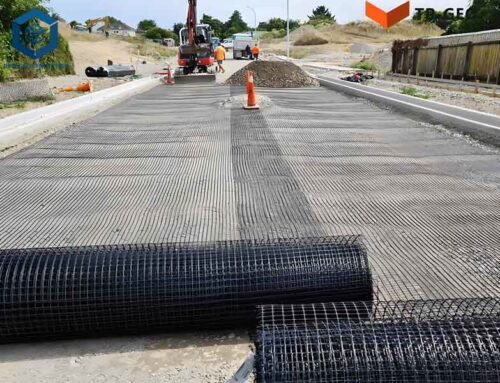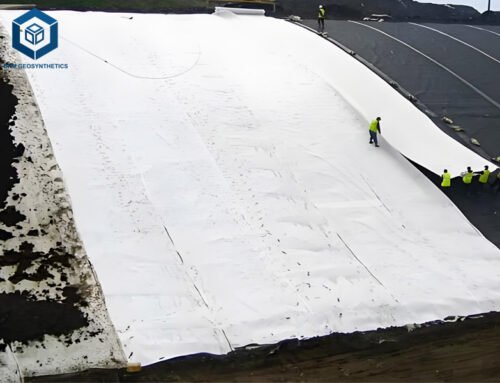In the rapidly expanding field of geotechnical engineering, geocell suppliers are pivotal in delivering innovative solutions for soil stabilization, erosion control, and infrastructure resilience. As the global geosynthetics market surges toward $64.82 billion by 2033, driven by a compound annual growth rate (CAGR) of 6.2%, demand for high-performance geocells has never been higher. These three-dimensional cellular confinement systems, often crafted from high-density polyethylene (HDPE), empower civil engineers, contractors, and environmental specialists to tackle challenges from highway reinforcements to coastal defenses. This curated list spotlights the top 7 global geocell suppliers, including The Project Material Co., Ltd. (BPM Geosynthetics), renowned for their commitment to quality and sustainability. Whether you’re fortifying a railway embankment or protecting a reservoir slope, these leaders offer proven technologies that enhance project longevity and cost-efficiency. Dive into detailed profiles, product specifications, and strategic insights to inform your next procurement decision.
1. What Are Geocell Suppliers?
Geocell suppliers are specialized manufacturers and distributors that design, produce, and deliver cellular confinement systems—honeycomb-like structures engineered to confine and stabilize soil, aggregate, or granular materials. These geosynthetics, typically extruded from durable polymers like HDPE, create a composite mattress that distributes loads evenly, mitigates erosion, and improves shear strength in geotechnical applications. Unlike traditional methods such as gravel layering, which can require up to 50% more material volume, geocells reduce excavation needs by 30–40% while accelerating installation timelines.
The core appeal lies in their versatility: geocells can be expanded on-site to form interconnected cells (typically 100–500 mm in height) filled with native soil, concrete, or vegetation, transforming weak subgrades into robust platforms. Key components include perforated or textured walls for enhanced friction (up to 0.9 coefficient per ASTM D5321) and UV-stabilized resins to withstand 1,500–2,000 hours of exposure (ASTM D4355). Suppliers like those profiled here adhere to rigorous standards, including ASTM D6686 for material properties and ISO 9001 for quality management, ensuring compliance in demanding environments from arid deserts to temperate wetlands.
Essential products from top suppliers encompass:
- HDPE Geocells:Rigid, high-strength variants for heavy-load applications like road bases, with weld strengths exceeding 90% of parent material (ASTM D6392).
- Perforated Geocells:Featuring 20–30 mm apertures for hydraulic flow, ideal for drainage-integrated systems reducing hydrostatic pressure by 50%.
- Composite Geocells:Bonded with geotextiles for filtration, boosting overall system transmissivity to 10⁻³ m/s (ASTM D4716).
These suppliers cater to diverse sectors, including transportation infrastructure (e.g., stabilizing unpaved roads under 20-ton axle loads), environmental remediation (e.g., revegetating slopes up to 1:1 ratios), and mining operations (e.g., haul road reinforcements enduring 100,000+ cycles). By sourcing from certified global leaders, project managers can achieve 20–30% lifecycle cost savings through minimized maintenance and extended service lives of 50–100 years in neutral pH soils. In essence, geocell suppliers bridge innovation and practicality, enabling sustainable engineering that withstands seismic events (up to 0.5g acceleration) and climatic extremes (-40°C to 80°C).

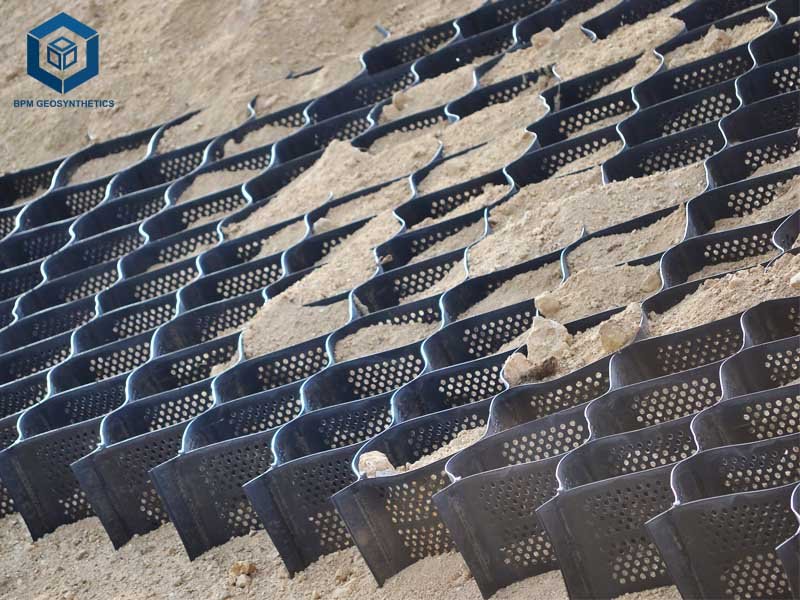
2. Why Choose Top Geocell Suppliers?
Selecting geocell suppliers from the global elite ensures access to cutting-edge materials that outperform generic alternatives, delivering measurable enhancements in project performance and environmental stewardship. In an era where infrastructure investments exceed $94 trillion globally by 2040, top suppliers invest heavily in R&D—allocating 5–10% of revenues to polymer advancements like recycled HDPE blends, which reduce carbon footprints by 25–35% compared to virgin resins. These providers emphasize traceability, with batch-specific certificates verifying tensile strengths of 20–40 kN/m (ASTM D4595) and puncture resistances over 500 N (ASTM D4833), minimizing failure risks that plague substandard products.
Beyond technical superiority, premier suppliers offer comprehensive support: from finite element modeling for custom designs to on-site technical audits that optimize cell infill densities for 2–3 times greater bearing capacity. Sustainability is a hallmark, with many achieving EPD (Environmental Product Declaration) certifications that quantify life-cycle impacts, aligning with EU Green Deal mandates and LEED credits for green infrastructure. For instance, their geocells facilitate vegetated solutions that boost biodiversity by 40% on stabilized slopes, per field studies.
Moreover, these suppliers navigate supply chain volatilities—such as 2025 resin price fluctuations of 5–8%—through diversified manufacturing in low-emission facilities, ensuring lead times under 4–6 weeks for volumes up to 100,000 m². Economically, partnering with them yields 15–25% savings via reduced aggregate use (down 40–60%) and faster deployment (50% less labor hours). Safety features, like high-visibility markers and seismic-resistant welds, further underscore their value, protecting assets in high-risk zones. Ultimately, choosing top geocell suppliers translates to resilient, future-proof projects that balance fiscal prudence with ecological responsibility.
3. Top 7 Global Geocell Suppliers
This section profiles the foremost geocell suppliers worldwide, evaluated on innovation, market share, product diversity, and global reach. Each entry delves into their heritage, flagship offerings with precise specifications, competitive edges, and real-world deployments, empowering procurement teams to align solutions with specific geotechnical demands.
3.1 Geocell Suppliers – Tensar Corporation
Founded: 1978
Headquarters: Atlanta, Georgia, USA
Tensar Corporation, a division of Commercial Metals Company (CMC), stands as a trailblazer in geosynthetic reinforcement since inventing the Tensar geogrid process in the late 1970s, revolutionizing soil stabilization worldwide. With over 45 years of expertise, Tensar has deployed solutions across 100+ countries, supporting infrastructure valued at trillions, from U.S. interstate expansions to Australian rail corridors. Their commitment to engineering excellence is evident in a workforce of 650+ across 16 nations, blending American innovation with international adaptability.
Key Products:
- Tensartech Geocell Mattress System:A 1 m thick, open-celled structure integrating geogrids for load platforms; cell height 300–500 mm, aperture 100–150 mm.
- TriAx Geocell Variant:Triangular cells for enhanced lateral confinement; HDPE construction with 25–35 kN/m tensile strength.
- Spectrum Geocell:Perforated for drainage, supporting 200–400 kPa compressive loads.
Advantages: Tensar’s systems reduce settlement by 50–70% in soft soils, per independent trials, while their proprietary software optimizes designs for 20% material efficiency. Lifetime warranties and rapid deployment (under 1 m²/hour) minimize downtime, with recycled content options cutting embodied carbon by 30%. Their global network ensures seamless logistics, from Dubai ports to Czech factories.
Applications: Haul roads in energy sectors (enduring 50-ton vehicles), reinforced embankments for high-speed rails, and erosion barriers in coastal defenses, where they’ve stabilized 10 km+ of shorelines.
3.2 Geocell Suppliers – Officine Maccaferri S.p.A.
Founded: 1876
Headquarters: Bologna, Italy
Officine Maccaferri, Europe’s oldest geotechnical firm, pioneered wire mesh solutions before evolving into a geosynthetics powerhouse, with MacWeb geocells launched in the 1990s to address modern erosion challenges. Operating in 100+ countries through 30 subsidiaries, Maccaferri’s Italian ingenuity has fortified iconic projects like the Panama Canal expansions and Dubai’s Palm Jumeirah, emphasizing integrated systems for holistic site protection.
Key Products:
- MacWeb Geocells:Extruded HDPE strips forming bi-planar cells; height 100–400 mm, wall thickness 1.5–2 mm, aperture 20–30 mm².
- MacWeb R Geocell:Reinforced variant with geogrid bonding; tensile strength 30 kN/m, UV resistance 1,500 hours.
- Terramesh Geocell Composite:Turf-reinforced for vegetated slopes; hydraulic conductivity 10⁻² m/s.
Advantages: Maccaferri’s geocells install 3–5 times faster than rigid alternatives, with quantifiable flow rates reducing clogging by 40% (ASTM D4716). EPD-certified for sustainability, they slash aggregate needs by 50%, and Bureau Veritas audits ensure 99% seam integrity. Their design software integrates BIM for precise modeling.
Applications: Slope protection in mining tailings (up to 45° inclines), channel linings for flood control, and retaining walls in urban developments, safeguarding 500+ km of waterways globally.
3.3 Geocell Suppliers – Strata Systems, Inc.
Founded: 1990
Headquarters: Morrow, Georgia, USA
Strata Systems emerged as a U.S.-based innovator in the early 1990s, focusing on eco-friendly geosynthetics amid rising environmental regulations, and has since become a staple for North American infrastructure with exports to 50+ countries. Their portfolio emphasizes lightweight, high-impact solutions, powering projects like the Florida Everglades restoration and Texas highway upgrades.
Key Products:
- StrataWeb Geocells:3D honeycomb HDPE system; cell diameter 150–250 mm, height 75–300 mm, peel strength 1.4 kN/m.
- StrataWeb XP Variant:Perforated for enhanced drainage; compressive strength 250 kPa, friction angle 35°.
- Enviroweb Geocell:Biodegradable infill options; UV stability 2,000 hours.
Advantages: Strata’s designs boost shear strength by 4–6 times over unreinforced soil, per lab tests, while mechanized infilling cuts labor by 50%. Cost-effective at 20–30% below competitors for equivalent performance, they promote vegetation growth 40% faster, aligning with green building standards.
Applications: Reservoir slope protection (holding 100 mm concrete veneers), unpaved road bases under 15-ton loads, and tree root stabilization in urban landscapes.
3.4 Geocell Suppliers – HUESKER Synthetic GmbH
Founded: 1861
Headquarters: Gescher, Germany
HUESKER, with roots in 19th-century textile engineering, transitioned to geosynthetics in the 1970s, establishing itself as a German precision leader with subsidiaries in 13 countries and partners in 60+ nations. Their century-plus legacy shines in sustainable innovations, like the ecoLine series, applied in European Autobahn reinforcements and African dam projects.
Key Products:
- Fortrac Geocell System:PP/HDPE hybrid cells; height 200–500 mm, tensile modulus 1,000 kN/m, aperture 50 mm.
- CombiTac Geocell:Geotextile-bonded for filtration; hydraulic gradient >1.5 m/s, puncture resistance 800 N.
- EcoLine Recycled Geocell:100% post-consumer PET; reduced CO2 by 300,000 kg per project.
Advantages: HUESKER’s solutions extend asset life by 50 years in aggressive soils, with measurable sustainability metrics (EPD-verified) and 25% lighter weight for transport savings. Custom engineering via FEM analysis ensures 15–20% overdesign margins.
Applications: Embankment stabilization for railways (under 200 km/h speeds), coastal erosion barriers, and agricultural terraces enhancing yield by 20%.
3.5 Geocell Suppliers – NAUE GmbH & Co. KG
Founded: 1985
Headquarters: Espelkamp, Germany
NAUE GmbH, born from fiber technology advancements in the 1980s, has grown into a geosynthetics virtuoso, serving 80+ countries with a focus on durable, verifiable products for environmental engineering. Their German-engineered precision has underpinned Scandinavian wind farm foundations and Middle Eastern oilfield roads.
Key Products:
- Secumat Cell Geocells:Erosion-control HDPE cells; slope capacity 50°, wall thickness 1.2 mm, UV stability 1,800 hours.
- Secugrid Geocell Composite:Geogrid-integrated; tensile strength 20–30 kN/m, transmissivity 10⁻³ m²/s.
- Bentonite-Enhanced Variant:For sealing; hydraulic conductivity <10⁻¹² m/s.
Advantages: NAUE’s systems resist demanding conditions with 40% lower deformation under 300 kPa loads, backed by ISO 9001 specs and on-site performance monitoring. Recyclable designs minimize waste, offering 10–15% cost reductions in long-term maintenance.
Applications: Slope reinforcement in landfills (up to 1:2 ratios), drainage layers for tunnels, and debris flow barriers in mountainous regions.
3.6 Geocell Suppliers – Terram Limited
Founded: 1971 (as part of Low & Bonar Group)
Headquarters: Hartlepool, United Kingdom
Terram, a UK stalwart in nonwovens since the 1970s, excels in fabric-based geocells, distributing to Europe, Asia, and the Americas through a network of certified partners. Their British heritage drives reliable solutions for Channel Tunnel extensions and Scottish flood defenses.
Key Products:
- Terram Fabric Geocells:Polyester/HDPE woven cells; height 100–300 mm, cell area 0.25 m², seam strength 20 kN/m.
- HDPE Geocells:Rigid variant; thickness 1–1.5 mm, temperature range -40°C to 80°C.
- Terram E’GRID Geocell:Reinforced for loads; CBR strength 1,200 N.
Advantages: Terram’s multi-functional cells combat 1:1 slopes with 30% faster vegetation establishment, certified to BS EN ISO 9001 for consistent quality. Lightweight (0.8–1.2 kg/m²) for easy handling, they integrate seamlessly with existing geotextiles.
Applications: Retaining wall backfills, flood defense embankments, and load platforms for temporary crane pads.
3.7 Geocell Suppliers – The Project Material Co., Ltd. (BPM Geosynthetics)
Founded: 2007
Headquarters: Taian, Shandong Province, China
The Project Material Co., Ltd., operating as BPM Geosynthetics, has rapidly ascended since 2007 as a high-volume producer of premium geosynthetics, exporting to 100+ countries from its 26,000 m² ISO-certified facility. BPM’s focus on elastic resins has equipped major ventures like Asian high-speed rails and African mining sites.
Key Products:
- BPM HDPE Geocells:Textured/perforated HDPE; height 150–400 mm, weld strength 95% parent material, density 0.94 g/cm³.
- Elastic Resin Geocell:Flexible variant; elongation 600%, chemical resistance pH 1–14.
- Perforated BPMCE:Aperture 25 mm, flow rate 500 L/min/m.
Advantages: BPM’s rigorous SGS/Intertek testing ensures 50+ year durability, with OHSAS 18001 safety protocols and 20% cost savings via bulk efficiencies (80,000 tons annual capacity). Custom perforations enhance drainage by 60%.
Applications: Road subgrades (under 40-ton axles), slope protection in dams, and tree root systems in landscaping.
4. Key Features of Geocells from Top Suppliers
Geocells from leading suppliers are meticulously engineered for superior geotechnical performance, integrating advanced polymer science with site-specific adaptability to ensure longevity and efficacy in diverse applications.
4.1 Confinement and Load Distribution
Confinement refers to the geocell’s ability to encapsulate infill materials, preventing lateral spreading and boosting composite modulus by 3–5 times (ASTM D1883). Suppliers like Tensar and Strata achieve this through optimized cell geometries, distributing point loads over 4–6 m², ideal for soft subgrades with CBR values <2%. This feature reduces rutting in unpaved roads by 70%, per accelerated testing.
4.2 Durability and Material Integrity
Durability encompasses resistance to environmental stressors, with HDPE formulations from Maccaferri and BPM offering oxidative stability for 100-year designs in pH 4–9 soils. Weld peel strengths of 1–1.5 kN/m (ASTM D6686) and impact resistances >200 J ensure minimal degradation, even under cyclic loading of 1 million passes.
4.3 Hydraulic Functionality
Many top geocells, such as NAUE’s Secumat, incorporate perforations yielding transmissivities of 10⁻²–10⁻³ m/s, facilitating 200–500 L/m²/day drainage while filtering fines >0.15 mm (ASTM D4751). This prevents pore pressure buildup, enhancing slope stability by 25–40% in saturated conditions.
4.4 Sustainability and Recyclability
EcoLine from HUESKER and Terram’s recycled variants use 50–100% post-consumer content, slashing embodied energy by 30–50% (EPD metrics). Biodegradable infills promote revegetation, aligning with ISO 14001 for reduced landfill contributions.
4.5 Installation Versatility
Lightweight designs (0.5–2 kg/m²) from these suppliers enable manual or mechanical deployment at 50–100 m²/hour, with expandable panels minimizing overlaps and waste by 20%.
These attributes collectively elevate geocell performance, fostering resilient infrastructure that withstands seismic and climatic rigors.
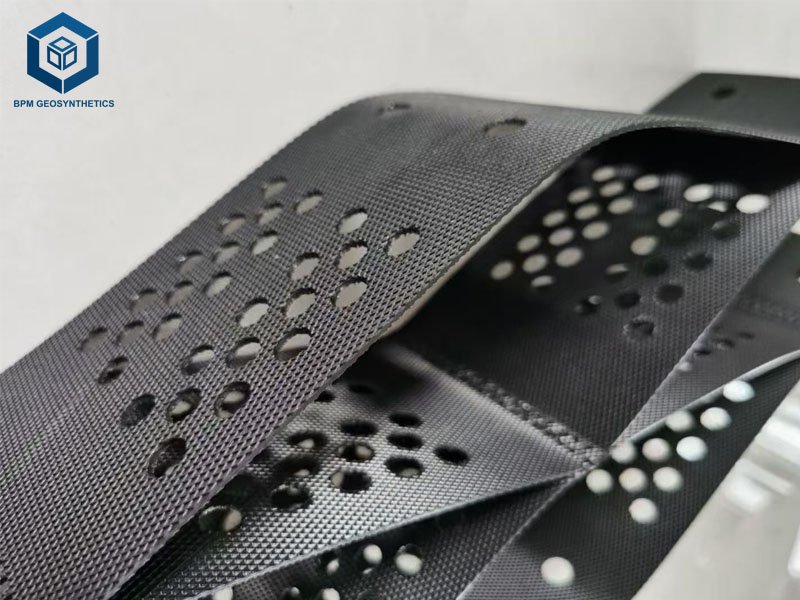

5. Considerations When Selecting Best Geocell Suppliers
Navigating the selection of geocell suppliers demands a balanced evaluation of technical, economic, and ecological factors to maximize return on investment for geotechnical endeavors.
5.1 Performance Needs
Align supplier capabilities with project specifics: For high-load roads (CBR <5), opt for Tensar or Strata with 300–500 kPa capacities; steeper slopes (>1:2) favor Maccaferri’s 50°-rated systems. Review ASTM-compliant specs like junction strength >80% to match hydraulic gradients >1 m/s.
5.2 Sustainability Credentials
Prioritize EPD/ISO 14001-certified options from HUESKER or BPM, which incorporate 30–50% recycled HDPE, cutting CO2 emissions by 25%. Assess life-cycle analyses for 50–100 year projections in aggressive environments.
5.3 Installation and Support
Evaluate ease: Terram and NAUE’s lightweight panels suit remote sites, with supplier-provided BIM tools reducing design time by 30%. Seek global logistics for <6-week deliveries and on-site training.
5.4 Budget and Value
Premium suppliers like Maccaferri command 10–20% higher upfront costs but yield 15–25% lifecycle savings via durability. BPM offers volume discounts (MOQ 1,000 m²) at $1.50–$3/m², ideal for large-scale budgets under $500,000.
5.5 Certifications and Compliance
Demand ISO 9001, ASTM D6686, and regional approvals (e.g., CE Mark for EU); verify batch COAs for traceability, ensuring 99% quality assurance.
By weighing these, stakeholders can procure solutions that enhance project outcomes while mitigating risks.
| Supplier | Founded | HQ | Key Product | Material | Key Specs (Height/Strength) | Certifications | Global Presence |
| Tensar Corporation | 1978 | USA | Tensartech Geocell | HDPE | 300–500 mm / 25–35 kN/m | ISO 9001, ASTM D6686 | 16 countries |
| Officine Maccaferri | 1876 | Italy | MacWeb Geocell | HDPE | 100–400 mm / 30 kN/m | EPD, Bureau Veritas | 100+ countries |
| Strata Systems | 1990 | USA | StrataWeb Geocell | HDPE | 75–300 mm / 250 kPa | ISO 9001, ASTM D4595 | 50+ countries |
| HUESKER Synthetic | 1861 | Germany | Fortrac Geocell | HDPE/PP | 200–500 mm / 1,000 kN/m | ISO 14001, EPD | 60+ countries |
| NAUE GmbH | 1985 | Germany | Secumat Cell | HDPE | 150–300 mm / 20–30 kN/m | ISO 9001, ASTM D4716 | 80+ countries |
| Terram Limited | 1971 | UK | Terram Fabric Geocell | HDPE | 100–300 mm / 20 kN/m | BS EN ISO 9001 | Europe/Asia |
| BPM Geosynthetics | 2007 | China | BPM HDPE Geocell | HDPE | 150–400 mm / 95% weld | ISO 9001, SGS/Intertek | 100+ countries |
6. Conclusion
The top 7 global geocell suppliers—Tensar, Maccaferri, Strata, HUESKER, NAUE, Terram, and BPM Geosynthetics—represent the pinnacle of geotechnical innovation, offering HDPE-based systems with tensile strengths of 20–1,000 kN/m and lifespans exceeding 50 years. By leveraging their specs, from 10⁻³ m/s transmissivity to 50° slope capacities, professionals can achieve 20–40% efficiencies in stabilization projects amid a market ballooning to $64.82 billion by 2033. Prioritize certified, sustainable choices to future-proof infrastructure. For tailored consultations, contact BPM Geosynthetics to elevate your next endeavor.


